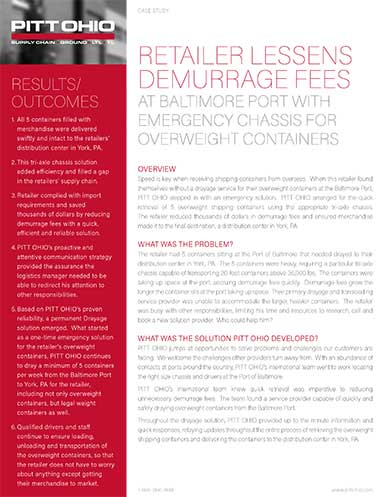Transportation Infrastructure in Desperate Need of New Gas Tax

The business-friendly U.S. Chamber of Commerce has often spoken about the need to raise the gas tax, and recently proposed a 5-cent per year increase in the federal gasoline tax, over the course of the next five years.
Time can be defined in many different ways. A year can be viewed as a long time for certain things, as can five years or an even decade. But you know what’s a really long time? 25 years, i.e. a quarter century.
Why is 25 years significant? Let me tie it to transportation infrastructure, specifically the Highway Trust Fund and its key funding mechanism, the federal gasoline tax, which has not been increased in, wait for it….25 years? As a quick reminder, the gas tax is 18.4 cents on gasoline and 24.4 cents on diesel.
What? How can this be? For one thing, this is how things often work in Washington unfortunately. And with such a large onus, or reluctance, by our nation’s lawmakers to increase taxes, regardless of the situation, it is where we find ourselves still.
But maybe that won’t always be the case. The reason for that has to do with a Washington Post article that indicates President Trump is trying to sell Republican lawmakers on a 25-cent gas tax increase.
Without question, as the article points out, there is some pushback on this notion, with the article Identifying a “growing rift among Republicans about whether it is worth considering a tax hike to fund much-needed upgrades to America’s roads and bridges.” What’s more, it added that Republicans are lukewarm on the idea of raising the gasoline tax on the heels of the recently-passed tax reform bill.
It is hardly surprising that they would be lukewarm regarding the possibility of raising the tax but Trump is not alone in raising the possibility of it being considered.
The business-friendly U.S. Chamber of Commerce has often spoken out about the need to raise the tax and recently proposed a 5-cent per year increase in the federal gasoline tax, over the next five years. Like the White House, this is a 25-cent increase, with the caveat that it is spread out a bit time-wise.
“Critics say that raising the gas tax is a political non-starter, but that’s just not true,” wrote U.S. Chamber of Commerce CEO Tom Donahue in a USA Today editorial.
“Thirty-nine states have raised their fuel taxes since 1993. I have yet to hear of an elected official who lost their seat because they supported an increase in the fuel tax. Americans are willing to contribute a little more if it means better, safer roads, and a faster commute.”
And it is not just the White House and the U.S. Chamber of Commerce looking to raise the tax. Department of Transportation Secretary Elaine Chao said this week that raising the tax is “on the table.”
When one takes into account the staggering financial shortfall in the Highway Trust Fund, considering raising the tax had better not fall off the table.
Here are a few quick reasons why culled from data from The Pew Charitable Trusts:
- The federal HTF provides roughly 95% of federal funding for surface transportation;
- From its inception in 1957 through 2000, HTF revenue exceeded spending in 31 out of 44 years, which allowed for the accumulation of significant reserves, with those surpluses turning to shortfalls over the last decade;
- In 2008, Congress initiated a series of transfers totaling more than $60 billion as of 2014, mostly from the United States general fund, into the HTF to help compensate for shortfalls;
- Between 2002 and 2012, federal gas tax revenue dropped by $15 billion, or 31%, with state revenue down by $10 billion or 19%
Other factors related to the HTF’s travails, and the need for raising the tax, included how driving patterns have changed, with miles traveled fallen modestly since 2007, cars have become more fuel efficient, and federal and many state gas taxes remain fixed even as construction costs have increased.
These all are actual facts that Congress can no longer afford to overlook, plain and simple.
But putting words and facts into action will certainly prove to be difficult. That’s the word from James Burnley, a partner at Washington, D.C.-based law firm Venable LLP and former Secretary of Transportation under the late President Ronald Reagan.
Increasing the gas tax, especially in an election year, makes its prospects a matter of timing, said Burnley.
“It is exceedingly unlikely you would see an increase in an election year, but in 2019, depending on the outcome of the 2018 mid-term elections, the composition of Congress could make a difference,” he said in a recent interview. “I don’t know how it will make a difference, but it will be relevant. But in 2019, as we have to start thinking about reauthorizing surface transportation programs, the fact that the Highway Trust Fund has collapsed as a practical matter and is not anywhere close to generating enough revenue through fuel and other taxes by law to cover current spending. We have had more than $140 billion in funds transferred from general treasury accounts into the Highway Trust Fund in the last decade just to prop it up so never mind increasing spending on surface transportation. That is something that needs to be dealt with. I don’t think Congress is likely to simply kick that can down the road much further, but that is a 2019-2020 debate.”
Timing certainly factors in, as Burnley notes, but it stands to reason that now is the time, perhaps more than ever. The financial numbers and the pot holes and the declining state of our nation’s infrastructure drives home that point more and more every day.
Are you listening, Congress? It’s time to get this done.
Related White Papers
Improving Packaging: The Cost of Shipping Air is Going Up
Retailers and Manufacturers that insist on using inefficient and sloppy packaging methods - oversized boxes, inefficient packaging, poorly constructed palletized contents - are paying for their mistakes in sharply higher freight rates. Download Now!
How Your Carrier Can Help You Understand Your Carbon Footprint
More companies are adopting sustainability initiatives to help identify areas in their organization where they can reap savings that also help improve the environment. Download Now!
Controlling Surface Transportation Costs: Six Steps Toward Improved Collaboration
The best trucking operators are the ones that can best match up their available capacity with enough freight to make their networks run in balance—or as close to 100 percent full in both the headhaul and backhaul lanes. Download Now!
Article Topics
PITT OHIO News & Resources
1-2 Day Reliable Delivery Service Adds Value to Customer’s Overall Offering 6 Reasons Shippers Diversify Their Portfolio of Drayage Providers PITT OHIO heralds new next-day lanes into New England PITT OHIO Wins 2023 Penske Logistics Freight Management Carrier Award Scope 3 Emissions from Freight Transportation Warehouse Solutions for a Variety of Industries PITT OHIO Receives 2nd Supply Chain Sustainability Award More PITT OHIOLatest in Transportation
Nissan Channels Tesla With Its Latest Manufacturing Process Why are Diesel Prices Climbing Back Over $4 a Gallon? Luxury Car Brands in Limbo After Chinese Company Violates Labor Laws The Three Biggest Challenges Facing Shippers and Carriers in 2024 Supply Chain Stability Index: “Tremendous Improvement” in 2023 Trucking Association CEO on New Biden Policy: ‘Entirely Unachievable’ Two Weeks After Baltimore, Another Cargo Ship Loses Power By Bridge More TransportationAbout the Author


















